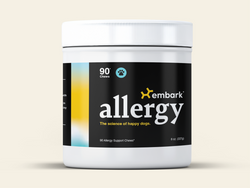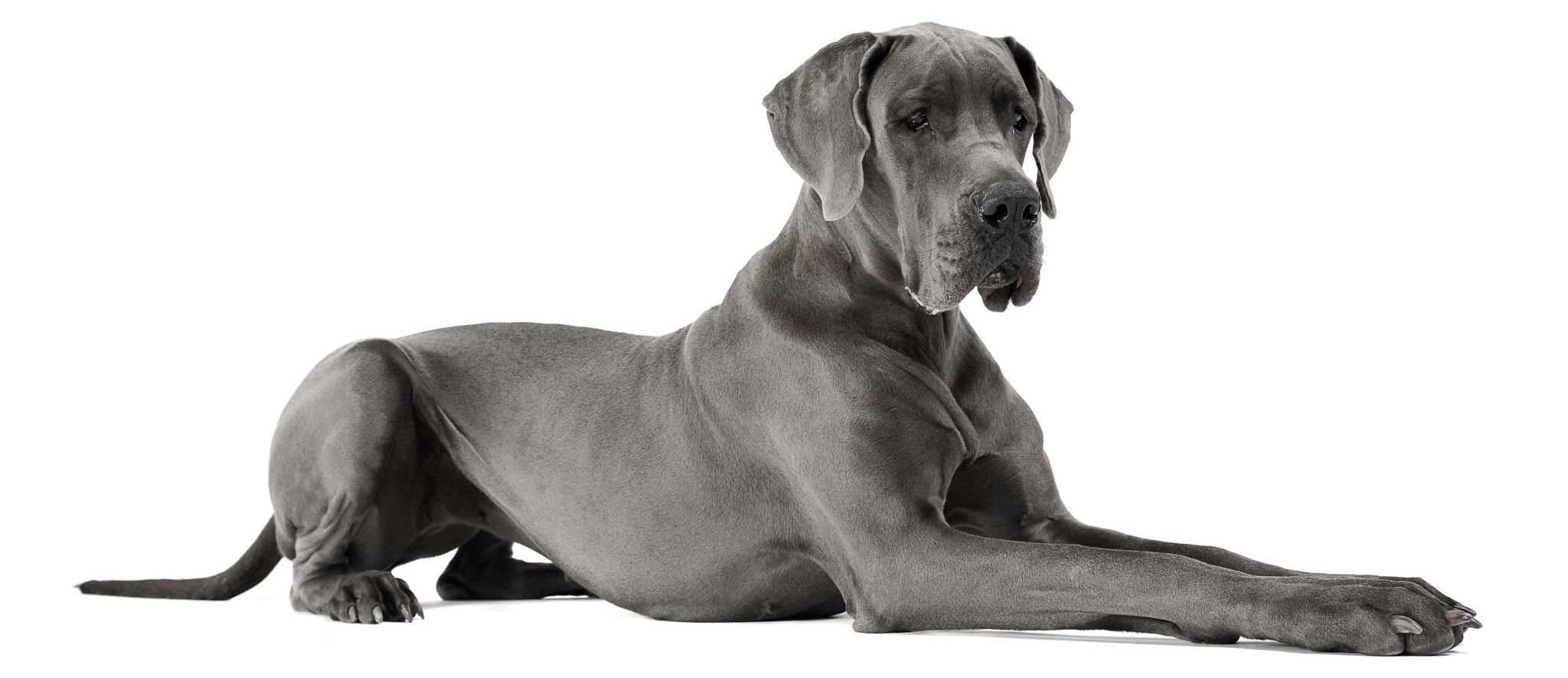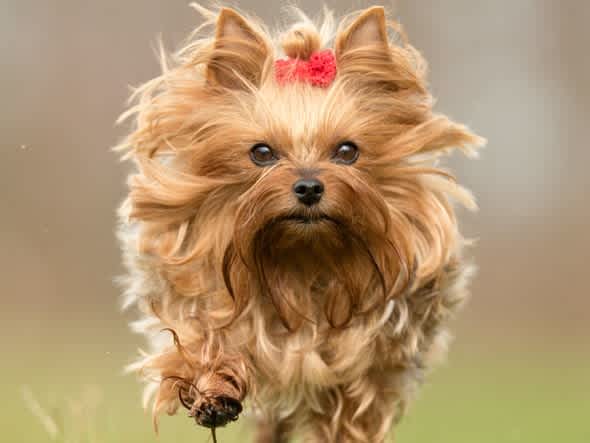Dogs make wonderful companions, but they can cause allergic reactions in some pet parents. Being allergic to a pet can lead to symptoms that range from mild to severe or life-threatening. It can also make bonding difficult.
While some people take allergy medications to reduce their dog allergy symptoms, others don’t find relief and must make the hard choice of finding a new home for their pet. But are there dogs who don’t cause allergies, and if so, what dog breeds are hypoallergenic? Can pet parents enjoy canine companionship from hypoallergenic dogs? It’s time to look at the science for these answers and more.
What is a dog allergy?
People with a dog allergy have an immune response to an allergen produced by the dog. According to Chan and Leung in a 2018 article in Allergy, Asthma & Immunology Research, as many as 10 to 20% of people are allergic to pets, and this number is still on the rise.
Even those who don’t have dog allergies but do have other allergies could find themselves reacting to pet allergens eventually. According to the Asthma and Allergy Foundation of America, up to 30% of people who have allergies or asthma also have allergic reactions to cats and dogs.
Interestingly, there are current studies taking place to figure out if exposure to pets during infancy can reduce allergies later in life.
Pet allergies aren’t immune reactions to the dog or the dog’s hair. In fact, what people are reacting to is the protein found in the pet’s saliva, dander (dead skin cells), or urine. By far, saliva is the primary cause of pet allergies. Because dogs frequently lick themselves and shed their fur and dander, they can spread this allergen protein around the home, where the saliva-containing dander becomes airborne or settles on carpeting, couches, beds, tables, and many other surfaces.
Unlike cats, which have Fel d 1 as the primary allergen protein, dogs have seven proteins that can cause allergic reactions in people. These proteins include Can f 1, Can f 2, Can f 3, and Can f 4 through to Can f 7, with the first two often affecting the most people. For example, in a 2013 study published in Allergy, the Can f 1 and Can f 2 proteins affected 52% and 33% of participants, respectively. Sometimes, these proteins can appear in dander but not saliva, or one sex but not the other, such as Can f 5, which only intact male dogs produce.
What makes a dog hypoallergenic?
Being called hypoallergenic means the dog is less likely to cause someone to have an allergic reaction. However, no dog is 100% hypoallergenic. Like people, all dogs shed their hair from time to time. What makes the difference is the frequency that dogs shed their hair and whether they have a double coat or a single coat. Most low-shedding dogs are those with a single coat—the top coat. Although, some dog breeds with an undercoat and a wiry or curly top coat—like the Schnauzer—are known to shed very little.
Additionally, all dogs have varying proteins and genetic traits that can make them more or less likely to shed. Variation of genes like MC5R, which alters sebum characteristics , RSPO2, which influences coat traits, and FGF5, which influences coat length, determine the amount of shedding in an individual.
Some breeds are considered hypoallergenic because they shed less or release less dander, but even individuals within a breed or breed cross may have less shedding than another dog. Because people are unique as well, two people with allergies may react differently to a single dog. In one 2011 study published in American Journal of Rhinology & Allergy, researchers found no difference in levels of Can f 1 protein (the primary dog allergen) in households with dogs classified as hypoallergenic compared to non-hypoallergenic-dog households. This reminds ushow variable protein levels are from dog to dog, even within a single breed, and why we can not rely on any breed being hypoallergenic
What types of dogs are hypoallergenic?
Typically, dogs with wiry, curly, or wavy hair are more likely to shed less. Dogs with a single coat and those with naturally long hair also make a name for themselves as hypoallergenic pets.
Some hypoallergenic dogs benefit from daily brushings to remove minimal shed hair or dander, while others are even more low maintenance and require brushing once or twice per week.
Importance of knowing breed mix
Dog breeds can give you a clue as to whether a pet will be a minimal shedder, but not all dogs are a single breed. Mixed breed pets have the uniqueness of multiple breed qualities, which also means they can have even more genetic variation.
By knowing their dog’s breed mix, pet parents may get clues on what to expect for shedding, allergy potential, and even physical characteristics and health traits. Embark has dog DNA tests that do exactly that, because happy homes make happy lives for all.
What are the most popular hypoallergenic dog breeds?
People looking for dogs that minimally shed don’t need to focus on one breed or one size of pet because there are many hypoallergenic or almost non-shedding dogs. As mentioned earlier, some people can still react to low-shedding dogs because of dander, proteins, or other factors. Spending time together before making a final decision is the best way to see whether a new dog might irritate an allergy.
Whether through local breeders or animal shelters or responsible pet stores, people can welcome home their choice of small, medium, or big hypoallergenic dogs. Small dogs might be perfect for apartment living, while large dogs might be the best companions if you have more space.
Small hypoallergenic dogs

Bichon Frise. The Bichon Frise has a playful, happy personality and a low-shedding curly coat. They need brushing a couple times a week and benefit from monthly trims to prevent matted fur.
Maltese. This small dog has a big personality and a long coat with silky hair that can reach the ground. Maltese dogs need daily brushings to prevent matting, so some pet parents trim the coat into a puppy cut.
Chinese Crested. Chinese crested dogs have hairless and full coat variants, but even the hairless has low-shedding hair on the head, tail, and feet. These dogs need regular brushing to prevent matting.
Miniature Schnauzer. This bold and intelligent dog has a wiry coat and soft undercoat but is still low shedding. Miniature Schnauzers need regular grooming, and their coat benefits from hand stripping rather than clipping, which can cause the top coat to change shape.
West Highland White Terrier. Lively and playful, the West Highland White Terrier is equally low maintenance with their coat, only requiring regular brushing and trimming every other month.
Shih Tzu. This outgoing and affectionate dog has a long, silky coat. They need daily brushing and special attention to their mustache and topknot.
Affenpinscher. Affenpinschers are confident but fearless, and they have a wiry, dense, and slow-growing coat that needs brushing twice a week. Pet parents can remove matted hair by hand.
Medium hypoallergenic dogs
Bedlington Terrier. This intelligent but stubborn breed has a thick coat of curly hair that grows quickly. They need regular brushing and clipping, but their hair has minimal shedding.
Spanish Water Dog. This hardworking and upbeat dog has a curly coat that forms long cords. While pet parents should never brush the hair because it leads to matting, they should hand-separate any curls to help the natural cords form.
Lagotto Romagnolo. Sweet-tempered and hardworking, the Lagotto Romagnolo has a thick, curly coat that needs regular trimming but not brushing, which can result in mats.
Poodle. Intelligent and active, poodles have thick, curly, and long hair. Their coat can mat without daily brushings, which is why some pet parents opt for a short, manicured trim.
Barbet. This water-loving dog has a friendly and sweet-natured personality, along with an all-over coat of thick curls. Barbets need regular brushing and look best with hand separation of matting.
Large hypoallergenic dogs
Afghan Hounds. Graceful and fast-moving, the Afghan Hound has a long, silky coat of hair that needs daily brushing. The hair is low-shedding, but it can mat and clump easily without grooming.
Portuguese Water Dog. These large and adventurous dogs have a thick, curly, or wavy coat and need regular grooming. Unlike the Spanish Water Dog, the Portuguese Water Dog does well with brushing because their hair does not form cords. Some pet parents like to trim the hair into different styles.
Irish Water Spaniel. These hardworking and inquisitive dogs have a coat of thick, curly hair that needs brushing a couple of times a week. They also benefit from trims every other month to help shape the long hair.
Airedale Terrier. This large terrier has an active, determined personality and a short, wiry coat. Airedales benefit from weekly brushings that should catch any matting. Otherwise, pet parents should hand separate any mats.
Can dogs have allergies?
While people can be allergic to dogs, all breeds of dogs can also have allergies of their own. It’s important to understand the signs of allergies in your dog. That way you can get them relief and treatment quickly.
Conclusion
Although a true hypoallergenic dog doesn’t exist, there are many breeds that exhibit low-shedding traits that may help pet parents enjoy the companionship of a dog without experiencing constant allergic reactions. Individual pets must be assessed for compatibility within a family as individual allergies can be very specific, and there is no “one size fits all.”
To learn more about your new dog, reach out to us at Embark to see how our dog DNA tests can help reveal health traits and other features, including their breed mix.














